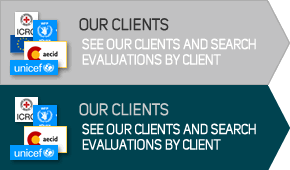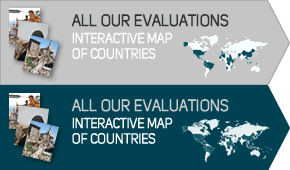November 4, 2010
Three questions for Riccardo Polastro, team leader of the Inter-Agency Real-Time Evaluation (IA-RTE) in Philippines.
Question: What exactly is an IA-RTE and what value does it have?
Riccardo Polastro: An Inter-Agency Real-Time Evaluation is a snapshot of the response to a specific disaster. It usually takes place in the early implementation stages of the humanitarian response, right when the emergency response is taking place. Its purpose is to provide feedback that will support and facilitate strategic decision-making both for planning and implementation. Its emphasis is on lesson-learning.
Q: How did you associate the local population, victims of the typhoons, to your evaluation?
RP: The RTE team conducted focus group interviews with the local populations affected by the disaster in some 20 different locations. This included people who stayed in their homes, people who where still displaced, people who were displaced and living in transitional shelter, people who had been relocated to safe areas, and others who had returned to their places of origin.
The affected populations were interviewed so that we could better understand the disaster, how their needs where assessed, the type and level of response they received, and also know what their expectations for the future were. Without their views one could would not be able to fully understand the efficiency and effectiveness of the response.
Q: What do you see as the most critical part of this mission?
RP: In this particular case, the team was only fielded in February of 2010, four months after the typhoons struck the Philippines. This has limited the evaluation itself, as well as its capacity to influence the emergency response. Nevertheless, we managed to draw lessons learnt on needs assessments, funding, coordination and response that can be applied to other disaster-prone middle-income countries.




Share this